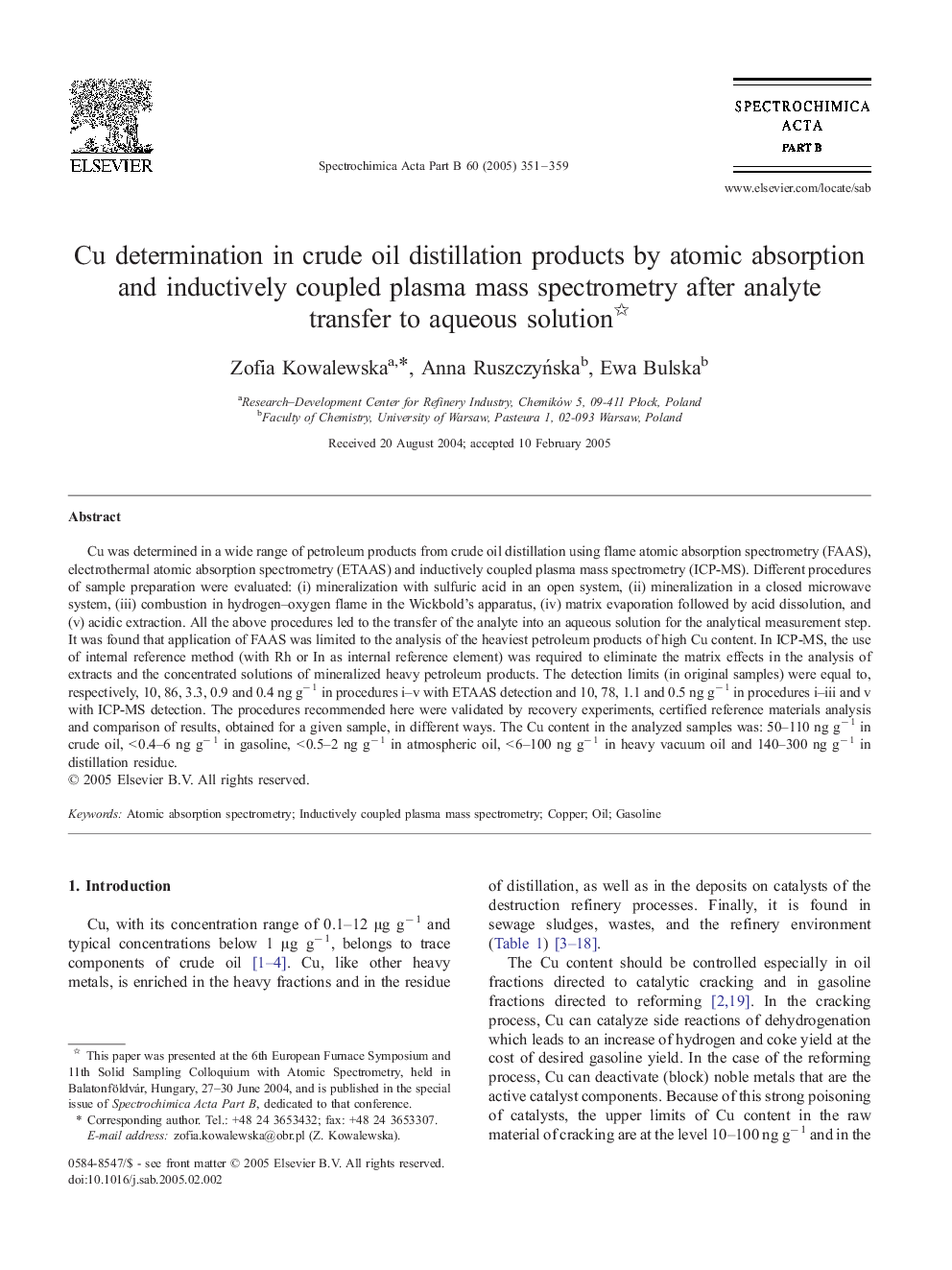| Article ID | Journal | Published Year | Pages | File Type |
|---|---|---|---|---|
| 10558574 | Spectrochimica Acta Part B: Atomic Spectroscopy | 2005 | 9 Pages |
Abstract
Cu was determined in a wide range of petroleum products from crude oil distillation using flame atomic absorption spectrometry (FAAS), electrothermal atomic absorption spectrometry (ETAAS) and inductively coupled plasma mass spectrometry (ICP-MS). Different procedures of sample preparation were evaluated: (i) mineralization with sulfuric acid in an open system, (ii) mineralization in a closed microwave system, (iii) combustion in hydrogen-oxygen flame in the Wickbold's apparatus, (iv) matrix evaporation followed by acid dissolution, and (v) acidic extraction. All the above procedures led to the transfer of the analyte into an aqueous solution for the analytical measurement step. It was found that application of FAAS was limited to the analysis of the heaviest petroleum products of high Cu content. In ICP-MS, the use of internal reference method (with Rh or In as internal reference element) was required to eliminate the matrix effects in the analysis of extracts and the concentrated solutions of mineralized heavy petroleum products. The detection limits (in original samples) were equal to, respectively, 10, 86, 3.3, 0.9 and 0.4 ng gâ 1 in procedures i-v with ETAAS detection and 10, 78, 1.1 and 0.5 ng gâ 1 in procedures i-iii and v with ICP-MS detection. The procedures recommended here were validated by recovery experiments, certified reference materials analysis and comparison of results, obtained for a given sample, in different ways. The Cu content in the analyzed samples was: 50-110 ng gâ 1 in crude oil, < 0.4-6 ng gâ 1 in gasoline, < 0.5-2 ng gâ 1 in atmospheric oil, < 6-100 ng gâ 1 in heavy vacuum oil and 140-300 ng gâ 1 in distillation residue.
Keywords
Related Topics
Physical Sciences and Engineering
Chemistry
Analytical Chemistry
Authors
Zofia Kowalewska, Anna RuszczyÅska, Ewa Bulska,
